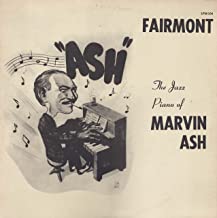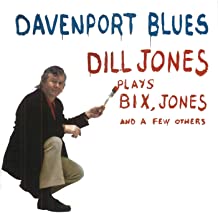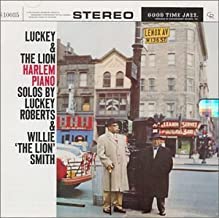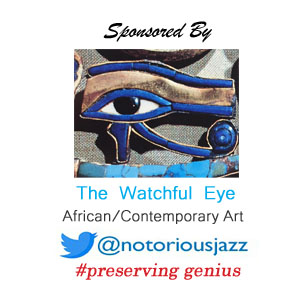
Daily Dose Of Jazz…
Marvin Ash was born Marvin E. Ashbaugh was born on October 4, 1914 in Lamar, Colorado. Growing up in Junction City and Emporia, Kansas he started playing with bands during high school. He worked with Count Basie, Wallie Stoeffer, Con Conrad, Herman Waldman and Jack Crawford. On a visit to Abilene, Texas in 1931 he found inspiration when he heard pianist Earl Hines perform. A fortunate encounter at Jenkins’ Music Store afforded him the opportunity to hear Joe Sullivan play his Little Rock Getaway for Fats Waller and Arthur Schutt, seated at two other pianos. He adapted his style similar to the three of them.
Moving to Tulsa, Oklahoma at 22 he worked in radio as a studio pianist, musical director, and announcer at KVOO-FM. This allowed him to learn about different piano styles, his favorite musicians being stride pianists James P. Johnson and Waller, Pete Johnson, Earl Hines, Art Tatum, Teddy Wilson, and long-time friend Bob Zurke.
1942 saw Marvin in the Army, assigned to Fort Sill in Oklahoma, where he remained for six months after the end of the war. After the end of his service he moved to Los Angeles, California where found work with trumpeter Wingy Manone’s band. This resulted in some of his earliest ensemble recordings, performances at Club 47 led to sessions with Clive Acker’s Jump Records as a soloist in late 1947, and with Rosy McHargue’s Memphis Five.
Ash’s playing caught the attention of Capitol Records producer and A&R man Lou Busch who hired him to record a few more sides in 1949 with a small ensemble. In the 1950s, he played in cocktail lounges in Los Angeles but had few recording dates as a soloist, instead working as a sideman with Jack Teagarden, Matty Matlock, Pud Brown and Pete Daily. Ash’s sessions resulted in a suite for Decca Records entitled New Orleans at Midnight.
He found employment at Walt Disney Studios music department as a performer on movie and television soundtracks, and acting as the resident arranger and pianist for the Mickey Mouse Club. Marvin frequently performed with George Bruns’ group or with his own small ensemble at Disneyland.
Retiring in the mid Sixties, Ash spent his last few years playing vintage jazz, stride, and ragtime in the cocktail lounge of a large bowling alley in Los Angeles. He continued to be hired for special appearances until his death. Pianist Marvin Ash passed away on August 21, 1974 in Los Angeles, California at the age of 59.
More Posts: arranger,bandleader,history,instrumental,jazz,music,piano

Daily Dose Of Jazz…
Bryce Benno Rohde was born on September 12, 1923 in Hobart, Tasmania, an island state of Australia. His early influences were Art Tatum and Nat King Cole but eventually leaned towards George Russell’s Lydian Concept.
He played jazz in Adelaide, Australia early in his career before a 1953 move to Canada. In 1954 he and two other expats plus an American formed the Australian Jazz Quartet/Quintet. The group recorded several albums and toured widely in the United States, but broke up in 1958 following a tour of Australia.
Rohde led his own quartets in Australia until 1964, then moved to California in 1965. After then he based himself out of San Francisco, leading his own ensembles at times. Among those Australian musicians with whom he worked extensively are Bruce Cale and Charlie Munro.
The pianist played New York City and Chicago, and recorded for Bethlehem Records. He also published a book combining original jazz compositions and his other passion, black and white photography. It shares the title of one of his seven recordings as a leader, Turn Right At New South Wales.
Over a career in jazz spanning more than 50 years he performed with Count Basie, Miles Davis, Billie Holiday, and John Coltrane among others. He eventually settled in San Francisco, California where he continued to perform and record until his death. Pianist, composer and bandleader Bryce Rohde passed away on January 26, 2016.
More Posts: bandleader,composer,history,instrumental,jazz,music,piano

Daily Dose Of Jazz…
Dill Jones was born Dillwyn Owen Paton Jones on August 19, 1923 in Newcastle Emlyn, Carmarthenshire, Wales. He was brought up in New Quay on the Cardiganshire coast. Music was in the family, his mother a pianist and his aunt played organ at the Methodist Tabernacle. He was exposed to jazz as a 10-year-old by hearing records by Fats Waller and Bix Beiderbecke on the radio.
After leaving college, Jones followed his father into banking but was called up by the Royal Navy for wartime service in the Far East. When the war ended he enrolled at Trinity College of Music in London, England but did not complete the course, preferring the informality of late night jazz sessions.
Joining the Harry Parry Sextet and Vic Lewis’ Orchestra before plying his trade as ship’s pianist on the luxury liner, the Queen Mary, he sailed between New York City and Southampton. This gave Dill the chance to hang out in New York’s jazz clubs and hear Coleman Hawkins and Lennie Tristano, among others. After forming the Dill Jones Quartet in 1959, he emigrated to the United States in 1961, settling in New York City. He became an expert in the Harlem stride style. was soon in demand, earning his reputation playing with the likes of Gene Krupa, Jimmy McPartland and Yank Lawson.
Between 1969–1973, Jones was a member of the JPJ Quartet with Budd Johnson, Oliver Jackson and Bill Pemberton. A double CD anthology of Dill Jones` work was released in 2004, entitled Davenport Blues – Dill Jones plays Bix, Jones and a Few Others.
Pianist Dill Jones, who was instrumental in bringing jazz to British television when he hosted the BBC Jazz Club, passed away from throat cancer in a New York hospital on June 22, 1984. He was 60

Daily Dose Of Jazz…
Luckey Roberts was born Charles Luckyth Roberts on August 7, 1887 in Philadelphia, Pennsylvania, and was playing piano and acting professionally with traveling Negro minstrel shows in his childhood. Settling in New York City about 1910 he became one of the leading pianists in Harlem, and started publishing some of his original rags.
Roberts toured France and the UK with James Reese Europe during World War I, then returned to New York where he wrote music for various shows and recorded piano rolls. With James P. Johnson, he developed the stride piano style of playing about 1919.
His reach on the keyboard was unusually large and Luckey could reach a fourteenth, leading to a rumor that he had the webbing between his fingers surgically cut. Those who knew him and saw him play live denounced it as false, he simply had naturally large hands with a wide finger spread.
By the 1920s Roberts teamed up with lyricist Alex C. Rogers, co-wrote three Broadway musicals, Go-Go and Sharlee in 1923, and My Magnolia in 1926, the latter starred Adelaide Hall, a major black revue star.
Hisnoted compositions include Junk Man Rag, Moonlight Cocktail, Pork and Beans, and Railroad Blues. The Glenn Miller Orchestra recorded Moonlight Cocktail, and was the best selling record in the United States for ten weeks in 1942.An astute businessman, he became a millionaire twice through real estate dealings. Pianist and composer Luckey Roberts, who recorded piano solos with Willie “the Lion “ Smith, passed away on February 5, 1968 in New York City.

Daily Dose Of Jazz…
Cedric Wallace was born August 3, 1909 in Miami, Florida. Moving to New York City in the 1930s he played in a band led by Reggie Johnson at the Saratoga Club. Later in the decade he worked with Jimmie Lunceford before joining Fats Waller’s band from 1938-1942, the association for which he is best known. Wallace played with Waller at the peak of his popularity and plays on many of his biggest hits.
He would go on to record with Una Mae Carlisle, Maxine Sullivan, Champion Jack Dupree, Pat Flowers, Gene Sedric, and Dean Martin. During the Forties Cedric led his own ensemble in New York in the 1940s which featured Eddie Gibbs on bass for a time, and continued to perform into the 1970s.
Double-bassist Cedric Wallace passed away on August 19, 1985 in New York City.
More Posts: bandleader,bass,history,instrumental,jazz,music




